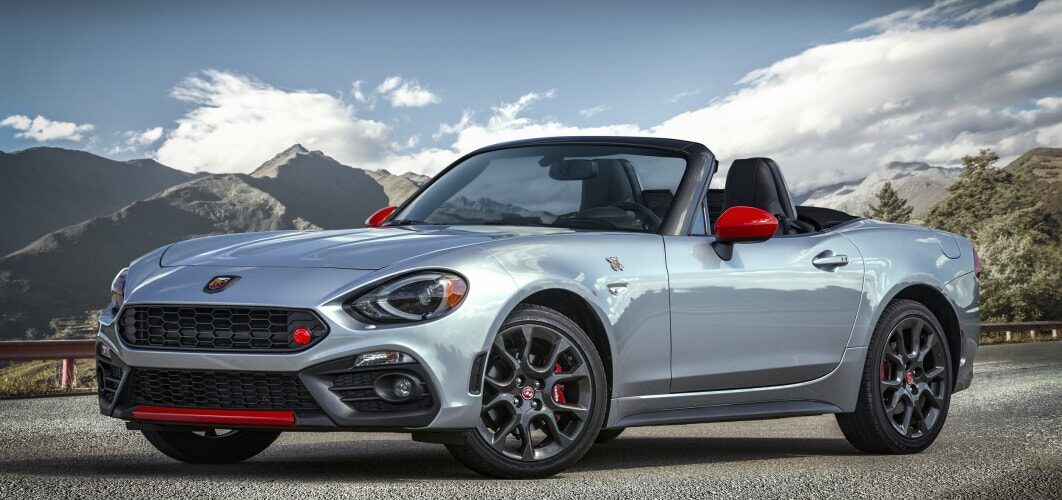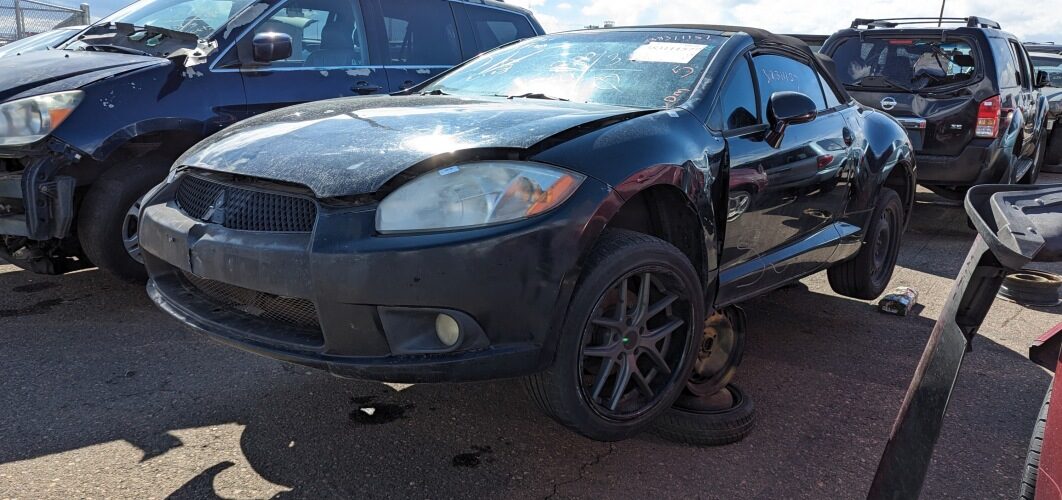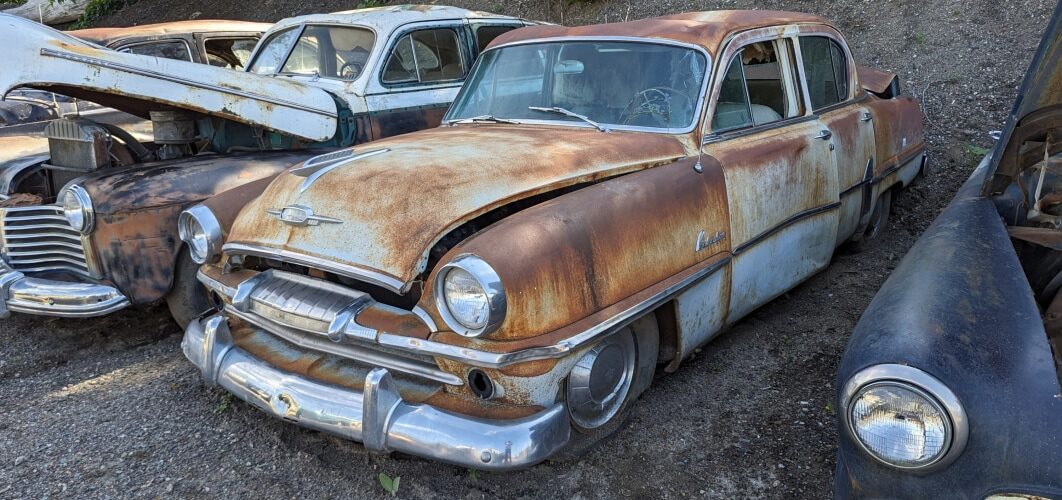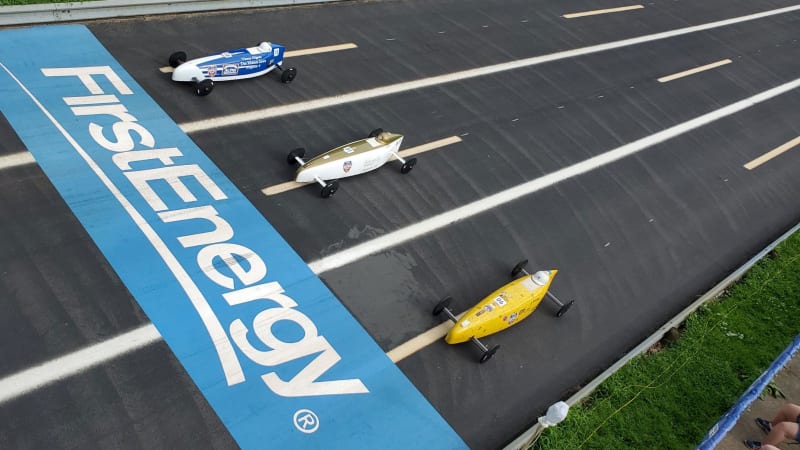The 2017 Fiat 124 Spider held the promise of melding two automotive cultures: the romance of the Italians and the focused finesse of the Japanese.
In simple terms, the Fiata, as it came to be called by aficionados, was in fact part Fiat, part Mazda, and all character. Unfortunately, the Miata MX-5 ND ruled the roost in this limited market. Mainstream consumers by this time were already convinced that the future was the SUV; a little two-seater with a stick shift and a rumbling ride wasn’t on too many wish lists.
Of course, the Miata, constantly updated through the years, survives today. The Fiata closed up shop in 2020 after only four years. Fiat’s questionable reputation for reliability and build quality throughout the previous decades in America didn’t help to push the sporty Spider up the sales charts.
Why is the Fiat 124 Spider a future classic?
The affordable roadster (which is not to be confused with the original Fiat Spider that launched in the 1960s) landed on US shores in three trim levels: Classica, Lusso and the performance-oriented Abarth, with starting prices that ranged from $25,990 to $28,195.
It was built alongside the Miata at Mazda’s Hiroshima plant in Japan. Comparisons of the two cars were expected, and voluminous: The Fiat used the same chassis, many of the same interior parts and even the same key fob as the Mazda. But the Spider had different tuning for its steering and suspension, and a different engine under the hood. Of course, both were convertibles.
Weight was an issue. The Spider’s 1.4-liter, turbocharged inline-four was good for 160 horsepower and 184 lb-ft of torque, but that made it 130 pounds heavier than its Japanese near-twin.
Then there was turbo lag. One review said that the Fiata Classica’s best launch from 0 to 60 mph required 6.5 seconds, not as quick as the 5.8-second start recorded in a Miata Club.
Fiat engineers were able to tame the roll of the Miata, but in doing so robbed the 124 of one of its more enviable traits: its tossability. The Fiat’s manual tranny received high marks, the automatic not so much.
Wind noise with the Fiat’s soft top down was horrible, which was sad because the 124 was otherwise superb in highway driving. It had a more compliant suspension that the MX-5, and more sound-deadening padding. Nonetheless, tall/big people weren’t particularly happy in either car’s interiors; “cramped” was a polite way to describe head and shoulder room.
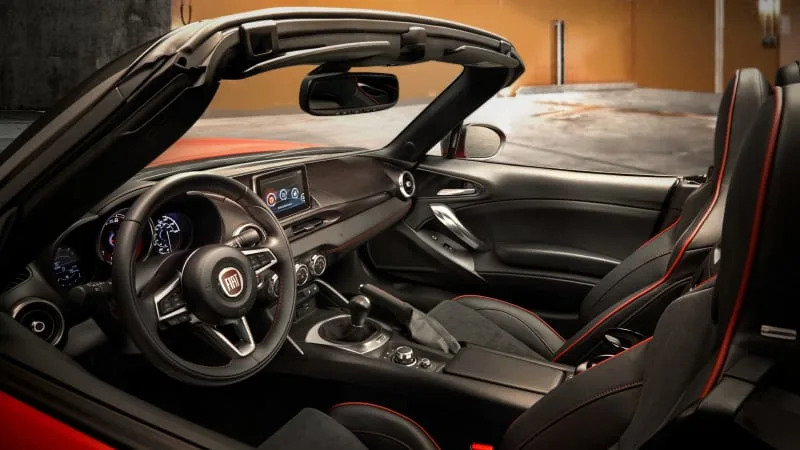
Speaking of highway driving, an Autoblog review raved about the sounds of the top trim level Abarth, calling it “the only 124 available with the special Record Monza exhaust, and it makes the Fiat growl and snarl like only Italian cars can.”
Standard safety features on the 2017 Fiat included antilock disc brakes, side airbags and stability and traction control. A rearview camera was available on all trims, while a blind-spot monitor, rear cross-traffic alert and rear parking sensors could be ordered on the Lusso and Abarth via the Safety and Comfort package.
The 124’s interior has a touch of baked-in Euro class, with soft-touch plastics, simple climate controls and a Mazda-sourced touchscreen. Fiat also claimed its model had a bigger trunk, but “bigger” in this case is something of an exaggeration: it measured 4.9 cubic feet compared to the Mazda’s 4.6.
What is the ideal example of the Fiat 124 Spider?
The 124 Abarth was billed by Fiat as the performance model. That boast was mitigated somewhat in 2019 when the Abarth’s 164-horsepower 1.4-liter turbocharged inline-four specs gave way to the Miata’s 181-hp 2.0-liter naturally aspirated engine.
Nonetheless, the Abarth served up 184 pound-feet of torque compared to the Miata’s 151 lb-ft. More importantly, the Abarth made its power down low, feeling punchier in the lower rpms.
And the Abarth did add some real benefits on top of the lesser trims of the 124, including a rear limited-slip differential, upgraded shocks and sharper tuning for the steering and suspension (and the grittier exhaust note mentioned above).
At the end of the day, the not-too-steep $3,000 price bump above the Classica made a slightly more convincing argument for choosing the Abarth, plus consider the gunmetal matte hood and scorpion Abarth badges fore and aft.
Be sure to check out our used vehicle listings; they can be helpful for finding a good deal. You can narrow the options down by a radius around your ZIP code, and be sure to pay attention to the deal rating on each listing to see how a vehicle compares with others in a similar area.
Are there any good alternatives to the Fiat 124 Spider?
Used Spiders can be pricey. A white automatic one-owner Abarth from 2017 with 33,000 miles prices at $23,000 at the time this was written; other 124 Spiders are listed at about $20,000.
The alternatives were (and, in terms of the MX-5, still are) limited. The Subaru BRZ and Toyota 86 come to mind as far as affordability, and they’re somewhat more refined in terms of ride and amenities.
The Audi TT and Mini Cooper Roadster make sense for those looking to match the fun quotients of the Fiata for a higher price, and both have German roots.

